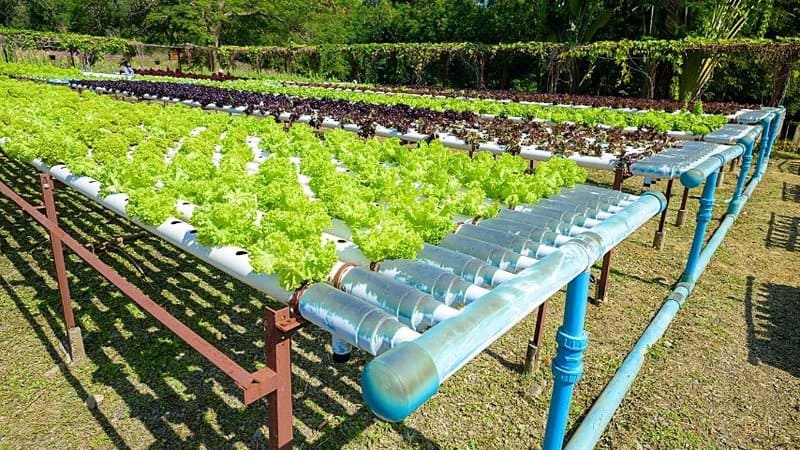Hydroponic farming is a soil-less cultivation method that offers an efficient and space-saving way to grow plants. Ideal for beginners and experienced growers alike, it provides controlled conditions for plant growth. Here’s a comprehensive beginner’s guide to setting up and maintaining a hydroponic system:
1. Understanding Hydroponics
Hydroponics involves growing plants in a nutrient-rich water solution without traditional soil. Instead, plants are supported by mediums like perlite, rockwool, or clay pellets, allowing their roots to access water, oxygen, and nutrients directly.
2. Setting Up a Hydroponic System
Choose a System Type: Select a hydroponic system based on space, budget, and the type of plants you wish to grow. Common types include Deep Water Culture (DWC), Nutrient Film Technique (NFT), and Ebb and Flow systems.
Select Suitable Plants: Many plants thrive in hydroponic systems, including lettuce, herbs, tomatoes, and peppers. Start with easier-to-grow varieties before attempting more complex crops.
Gather Equipment and Materials: Depending on the chosen system, gather items like a reservoir, growing trays, pH and EC meters, nutrient solution, lighting (if indoors), and growing medium.
Assemble the System: Follow manufacturer instructions or online tutorials to assemble the system correctly, ensuring proper connections and placements for optimal plant growth.

3. Nutrient Solution and pH Management
Prepare Nutrient Solution: Follow specific guidelines for mixing nutrients into the water solution. Monitor and adjust nutrient levels based on plant growth stages.
pH Monitoring: Maintain pH levels between 5.5 and 6.5 for most plants. Use pH meters and adjust pH levels using pH-up or pH-down solutions.
4. Lighting and Environmental Considerations
Lighting: Ensure adequate light exposure for plant growth. LED or fluorescent lights are common choices for indoor hydroponic setups.
Temperature and Humidity: Maintain optimal temperature and humidity levels suitable for the chosen plant varieties.
5. Maintenance and Care
Monitor Water Levels: Regularly check water levels in the reservoir and top up when necessary to prevent plants from drying out.
Regular Inspections: Check for signs of pests, diseases, or nutrient deficiencies. Prune and maintain plants as needed.
Cleaning and Sterilization: Periodically clean the system components to prevent the buildup of algae or bacteria that could harm plant health.
6. Troubleshooting
Nutrient Imbalances: Address any nutrient deficiencies or excesses promptly by adjusting the nutrient solution.
Pests and Diseases: Implement preventive measures and treat any issues immediately to avoid plant damage.
Conclusion
Hydroponic farming offers an accessible and rewarding way to grow plants regardless of space limitations or soil quality. By understanding the fundamentals, setting up the system correctly, and providing proper care and maintenance, beginners can successfully embark on their hydroponic farming journey. Experimentation, attention to detail, and continuous learning are key to mastering this innovative and efficient growing method.
